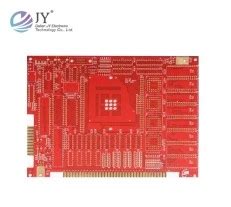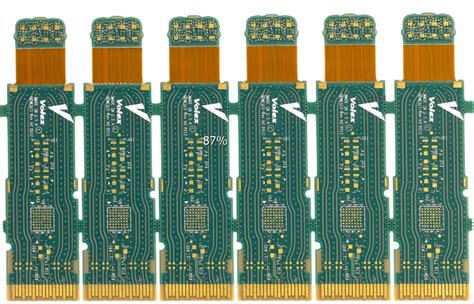What is PCB Software Licensing?
PCB software licensing refers to the legal agreement between the software provider and the user, outlining the terms and conditions under which the user can access and utilize the software. There are two main types of licensing models: subscription and perpetual.
Subscription Licensing
Subscription licensing, also known as Software as a Service (SaaS), is a model where users pay a recurring fee (usually monthly or annually) to access the software. This model offers several advantages:
- Lower upfront costs
- Regular updates and new features
- Scalability and flexibility
- Support and maintenance included
However, there are also some potential drawbacks:
- Higher long-term costs
- Dependence on the software provider
- Limited customization options
Perpetual Licensing
Perpetual licensing is the traditional model where users pay a one-time fee to purchase the software outright. This model offers:
- Lower long-term costs
- Full ownership and control
- Customization options
- Independence from the software provider
However, there are also some potential drawbacks:
- Higher upfront costs
- Limited updates and new features
- Additional costs for support and maintenance
Factors to Consider When Choosing a Licensing Model
When deciding between subscription and perpetual licensing for your PCB software, consider the following factors:
1. Budget
Your budget is a critical factor in determining the best licensing model for your business. If you have limited funds available upfront, a subscription model may be more suitable. However, if you have the resources to invest in a long-term solution, a perpetual license may offer better value for money.
2. Project Requirements
Consider the scope and duration of your PCB design projects. If you have short-term or one-off projects, a subscription model may be more cost-effective. For ongoing, long-term projects, a perpetual license may be the better choice.
3. Team Size and Collaboration
Think about the size of your team and how they will collaborate on PCB design projects. Subscription models often offer better scalability and flexibility for teams, allowing you to add or remove users as needed. Perpetual licenses may be more suitable for smaller, stable teams.
4. Update and Support Needs
Consider how important regular software updates and support are to your business. Subscription models typically include access to the latest features and updates, as well as ongoing support and maintenance. With perpetual licenses, you may need to pay extra for these services.

Comparison Table: Subscription vs Perpetual Licensing
| Factor | Subscription Licensing | Perpetual Licensing |
|---|---|---|
| Upfront Costs | Lower | Higher |
| Long-term Costs | Higher | Lower |
| Ownership | Software provider | User |
| Updates and New Features | Included | Limited |
| Scalability and Flexibility | Higher | Lower |
| Customization Options | Limited | More |
| Support and Maintenance | Included | Additional cost |

Case Studies
To better understand the implications of each licensing model, let’s look at two case studies:
Case Study 1: Startup with Limited Budget
A small startup is looking to design their first PCB product. They have limited funds available and are unsure about the long-term viability of the project. In this case, a subscription licensing model would be the most suitable option. It allows them to access the necessary software without a significant upfront investment, and they can easily scale up or down as needed.
Case Study 2: Established Company with Ongoing Projects
An established electronics company has multiple ongoing PCB design projects and a stable team of designers. They prioritize having full control over their software and the ability to customize it to their specific needs. In this case, a perpetual licensing model would be the better choice. While the upfront cost may be higher, the long-term savings and the ability to fully own and control the software make it a worthwhile investment.

FAQ
-
Q: Can I switch between subscription and perpetual licensing?
A: It depends on the software provider. Some may allow you to transition from a subscription to a perpetual license, but it’s not always possible to go from perpetual to subscription. -
Q: Are there any additional costs associated with perpetual licensing?
A: Yes, with perpetual licensing, you may need to pay extra for software updates, support, and maintenance. -
Q: How often are updates released for subscription-based PCB software?
A: Update frequency varies by software provider, but most offer regular updates (monthly or quarterly) to subscribers. -
Q: Can I use perpetual-licensed PCB software indefinitely?
A: Yes, with a perpetual license, you can use the software indefinitely, although you may not have access to the latest features and updates. -
Q: What happens to my PCB designs if I cancel my subscription?
A: Most software providers allow you to export your designs in a standard format, ensuring you can access them even if you cancel your subscription. However, it’s essential to check the specific terms and conditions of your provider.
Conclusion
Choosing between subscription and perpetual licensing for your PCB software is a crucial decision that can significantly impact your business. By considering factors such as budget, project requirements, team size, and update and support needs, you can determine the best licensing model for your specific situation.
Subscription licensing offers lower upfront costs, regular updates, and scalability, making it suitable for startups and businesses with short-term or variable projects. On the other hand, perpetual licensing provides lower long-term costs, full ownership, and customization options, making it ideal for established companies with ongoing projects and stable teams.
Ultimately, the right choice depends on your unique circumstances and priorities. By carefully evaluating your needs and the pros and cons of each licensing model, you can make an informed decision that sets your business up for success in the world of PCB design.

No responses yet